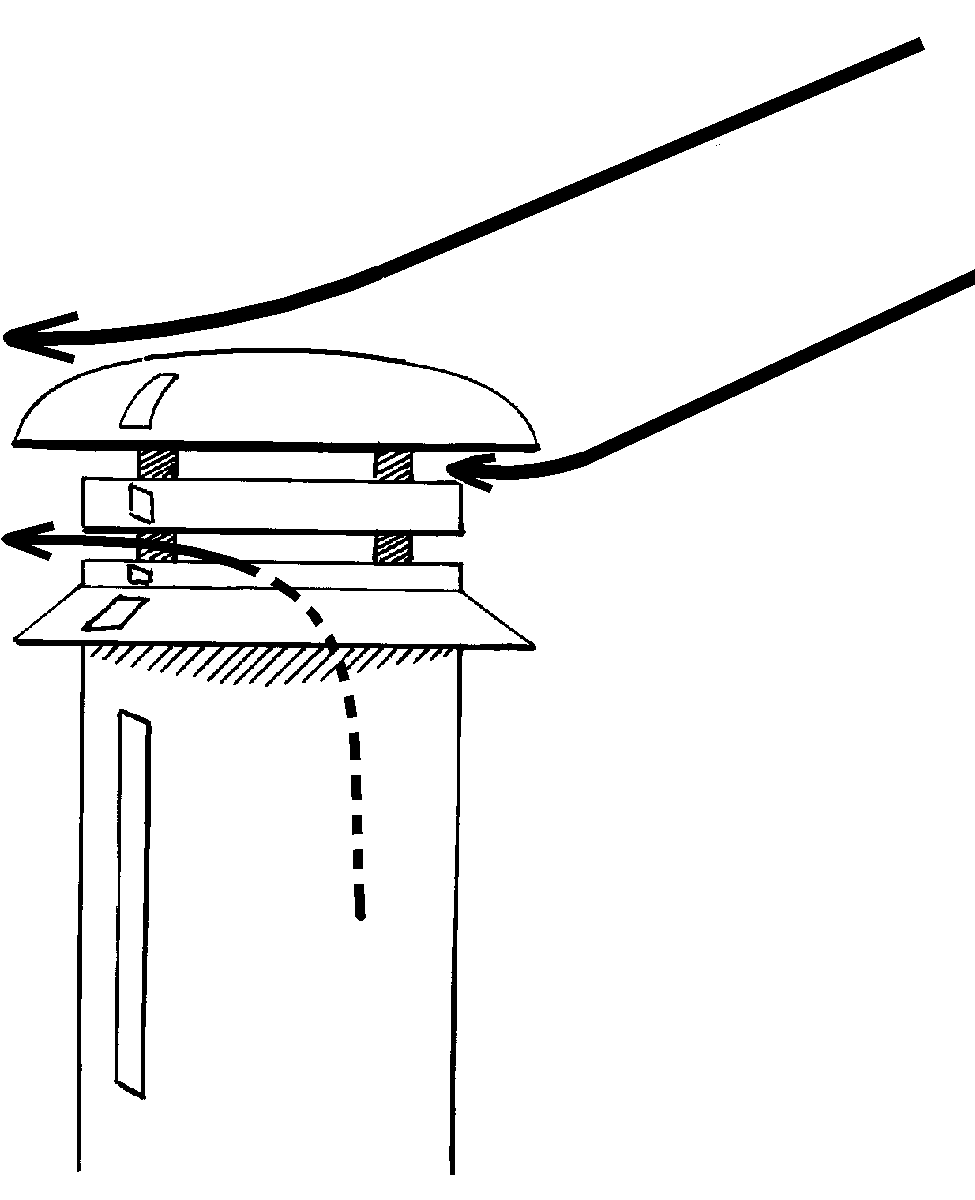The effects of wind |
||
|
Air is a fluid that has weight, so when it gets moving it exerts pressure on anything that gets in its way. If you have experienced a fifty mile per hour wind, you know all about it. Just like water, air flows in eddies and currents when it gets turbulent, as it does flowing around obstacles. The fact that air is invisible makes diagnosing wind-induced venting failure mostly guesswork, but there is some science that provides guidance. |
||
The higher the velocity of a stream of air, the lower is the pressure that it exerts on the surface it is flowing over. It is this principle (Bernoulli's) that gives an airplane wing its lift. For the same reason, wind flowing over the top of a chimney can increase draft by producing a driving pressure that assists in pulling exhaust gases from the chimney.
|
||
|
||
A couple of useful definitions:
|
||
|
The effects of wind on chimney performance A chimney with no cap is the most vulnerable to the adverse effects of wind. A cap, particularly one that has baffles to prevent direct line of sight access to the opening (as opposed to a simple flat rain cap) provides significant protection from the adverse effects of wind. In fact, research has shown that caps with baffles (of the sort common on factory-built chimneys) can actually enhance draft regardless of wind direction. |
||
|
|
||
|
Wind flowing from above or below an open chimney top can have an adverse effect on upward flow by creating turbulence and/or positive pressure at the opening. |
||
|
||
| Adverse pressure can also occur when the top of the chimney is in a positive pressure zone caused by the velocity pressure of the wind as it flows against a raised part of the building behind the chimney (below). This is one case in which adding to the height of the chimney may help to resolve a wind-related venting problem. | ||
|
Some caution is warranted when diagnosing what may appear to be wind-induced venting failure, particularly when the chimney already has a suitable cap. For example, a householder might report the intermittent puffing of smoke from the appliance that occurs only on windy days. The pulsing effect of wind gusts clearly plays a role in this type of smoke puffing, but is it the only cause? Other contributing factors could be low flue gas temperature due to fire smoldering, an outside chimney, or a chimney that is shorter that the building envelope as in the illustration below. The velocity pressure of wind flowing against a raised part of a building behind the chimney can produce an adverse effect on draft. Note that this system would already have a problem because the top of the chimney is lower than the upper part of the building envelope. This is a good example of how adverse characteristics can combine to create serious venting problems. |
||
|
Often, wind gusts simply cause a vulnerable system that verges on failure to spill the distinctive puffs of smoke that imply wind-induced downdraft. At one time or other, most chimney sweeps and technicians have recommended the installation of a specialized "anti-downdraft" chimney cap only to find that it did not cure the problem. Adverse pressure caused by wind acting on the chimney top is rarely the only cause of a venting problem. Nevertheless, chimneys in locations such as the one above may be susceptible to wind-induced failure, partly because they were failure-prone to begin with. |
||
| The effects of wind on the house envelope The force of wind blowing around a house produces a positive pressure zone on the windward side and a negative pressure zone on the downwind side. These pressures act on the leaks in the envelope, causing air flow through them and changing the pressures within the house. These pressure changes are best illustrated by looking at their effect on the position of the neutral pressure plane. The NPP can tilt away from the horizontal (left), but no illustration can properly convey the ragged, messy shape that the zone of neutral pressure can be distorted into by wind effects. Perhaps the best way to visualize the wind-induced pressure variations in a house is to compare the NPP to the surface of rough water. The plane of neutral pressure will have waves, curves, peaks and valleys responding to the aerodynamic influences around the building envelope. This understanding renders inherently inaccurate any simple attempt to define and illustrate the position of the NPP under windy conditions. |
||
In strong winds, the pressures experienced by the building envelope can be very powerful—several times the normal pressures produced in chimneys through natural draft. In gusting winds, the pressures and position of the NPP are in constant change, further complicating the diagnostic process. |
||
|
||
|
The effect of wind on the pressures around and inside a building are complex and unpredictable. In general, however, the leakier the building, the more pronounced and immediate is the effect on pressures inside. The unpredictable effects of wind pressure is one reason why the installation of a specialized chimney cap may not cure a venting problem. The pressure changes inside the house may be either driving or adverse to the desired flow of exhaust gases up the chimney. |
||
|
||
|
Although the effects of wind are unpredictable, one thing is abundantly clear: hearth and chimney systems of good design are highly resistant to wind-induced venting failure. A chimney that is installed inside the envelope, that penetrates the roof near the peak and that has a baffled cap is unlikely to be negatively affected by wind. |
||
|
Summary
Back to the Table of Contents |
